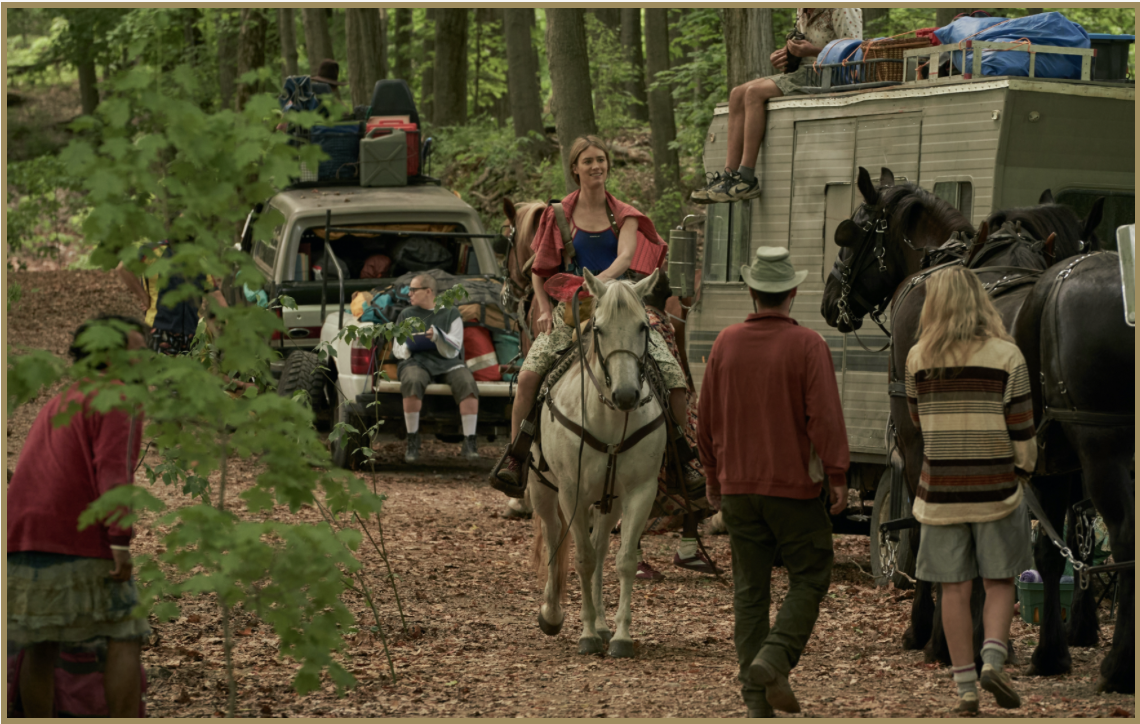
Welcome to Peabody Finds, the weekly newsletter for the Peabody Awards, offering our recommendations for powerful and thought-provoking media you should consider engaging. The newsletter offers deeper dives into Peabody-recognized programming (and beyond), with commentary, insights, and additional materials for context and expanded engagements. If you like it, subscribe here!
Why We Love to Live in These Dystopias
In April of 2017, I was among the millions who unquestioningly tuned in to the premiere of Hulu’s new TV version of The Handmaid’s Tale. Most, if not all, of us knew what we were in for. Many of us had read the 1985 Margaret Atwood novel, a feminist dystopian classic about a future United States (renamed Gilead) in which fertile women are held in reproductive servitude. When a content warning came on the screen, a friend with whom I was watching added his own joking caveat: “If you’re going to watch this, you better have your sh— together.” We laughed, darkly, then sighed with recognition. Too true.
No matter your political beliefs, you’d likely agree that America did not seem to be its most together at that moment. The election of Donald Trump five months earlier came as a shock to many of us, even those who voted for him. He’d recently delivered a dark and dour inauguration speech. His rise to power had exposed an America more deeply divided than we’d realized.
And so Atwood’s grim story of one woman grappling with her captivity after a violent, extremist Christian takeover of the U.S. government became our must-see TV.
The same has been true after the outbreak of the coronavirus changed our lives even more profoundly in 2020: We have turned to such TV series as Station Eleven last year and, this year, The Last of Us, as a way of coping with our collective trauma.
Over the past two decades or so, as real life has gotten ever more complicated, dystopias have been invading our airwaves at an increasing rate and have become a mainstay of the streaming era: Black Mirror, Westworld, Snowpiercer, The Man in the High Castle, The 100, Battlestar Gallactica, Jericho, The Walking Dead, The Leftovers, the list goes on.
Television may have begun as the medium of escapism, but no more. Ever since TV went prestige in the 2000s, it has served up dark visions of the future that top our dark worries of the present. The question: Why do we like to wallow in our deepest fears?
Dystopian fiction began at the turn of the last century with H.G. Wells’ The Time Machine, a new genre that could reflect humanity’s fears as modern life hurtled forward, technological developments making life feel faster and faster, less digestible with every year. Dystopias present us with a pessimistic vision of the future in which something has gone very wrong, as wrong as possible and then some. The fictional dystopias began to coalesce among common themes—oppressive rule that upsets our modern democratic sensibilities, technology gone awry, demands for conformity that offend our independent spirits, environmental disaster, or some other end to the world as we know it. Besides Atwood’s and Wells’ work, other classics emerged from the genre such as George Orwell’s 1984 and Ray Bradbury’s Fahrenheit 451.
These familiar titles would become an indicator of our national mood, hitting the bestseller list whenever we felt unmoored. For instance, 2017, the year Handmaid premiered, was also a banner year for sales of dystopian classics.
Since then, dystopian stories have flooded the streaming waves. It seems counterintuitive that we’d gravitate toward dark stories in dark times—shouldn’t we just be watching Friends reruns on repeat to forget our problems?—but our attraction to dystopias also makes some sense if you look closely. These stories give us hope, depicting people triumphing in the worst circumstances. They also show us that things could be worse—presumably far worse—than our current circumstances. They allow us a safe way to think about national and world issues through allegories, rather than simply obsessing over the real news cycle and feeling powerless. They also allow us to rehearse worst-case scenarios in our heads, making us feel more prepared if the bad times get worse. Dystopian stories’ appeal has been proven by research, which reveals that there’s an ideal level of dystopia—disturbing, but not overwhelming, “with an underlying message of hope and resilience that can be inspiring,” as professor Lynn Zubernis writes on the Psychology Today website.
Here are a few of our favorite ways to dip into a potentially dark future, from The Handmaid’s Tale to the rapture-like mass extinction event of The Leftovers and HBO’s new pandemic-themed drama The Last of Us.
‘The Handmaid’s Tale’ (2017-present)
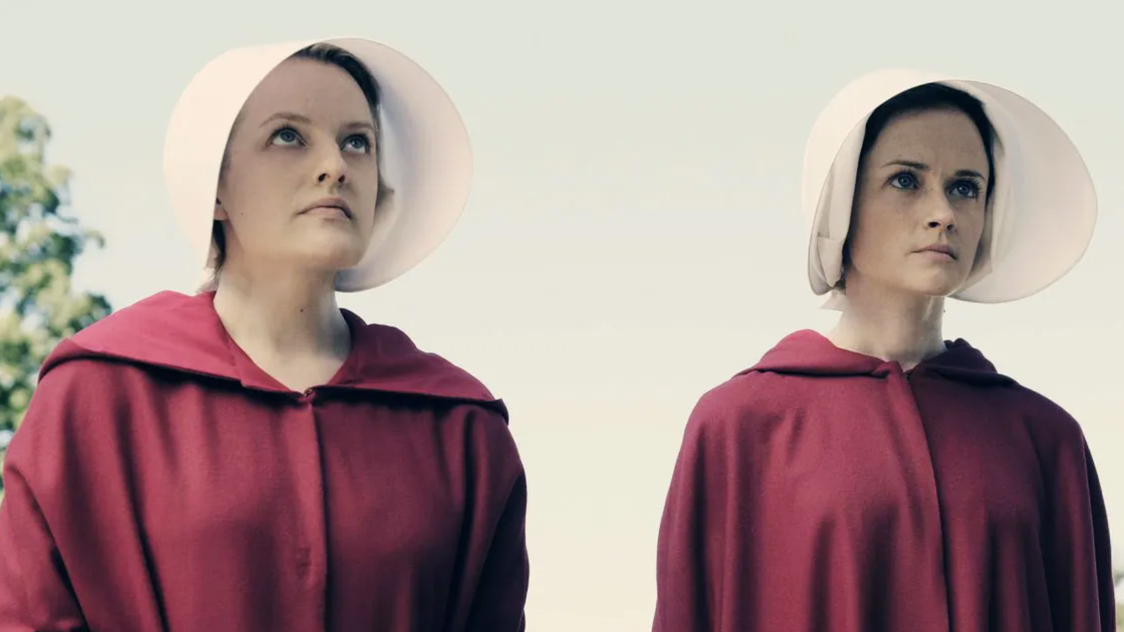
This adaptation of Atwood’s novel is gripping, particularly in its early seasons, as it follows handmaid Offred (Elisabeth Moss)—June in “the time before.” As she endures her life with Gilead Commander Fred Waterford (Joseph Fiennes) and his wife Serena Joy (Yvonne Strahovski), the plot simmers with quiet tension punctuated by occasional bursts of propulsive action. Throughout the series’ five seasons, June strives to escape and reunite with her own child, taken from her when she was captured, and her husband, who escaped to Canada. The next season will be its last, but showrunner Bruce Miller is set to next adapt Atwood’s sequel to Handmaid, The Testaments, into its own series. Miller told The Hollywood Reporterthat he’s got a clear vision for the Handmaid finale: “I’m very glad we’re being able to do it on our own terms because I know how lucky that makes us—all the actors and creative people who put their hearts and souls into it—to close up the play the way you want. Dropping the curtain the way you want is such a huge privilege.”
Where to Watch: Hulu
‘The Last of Us’ (2023)
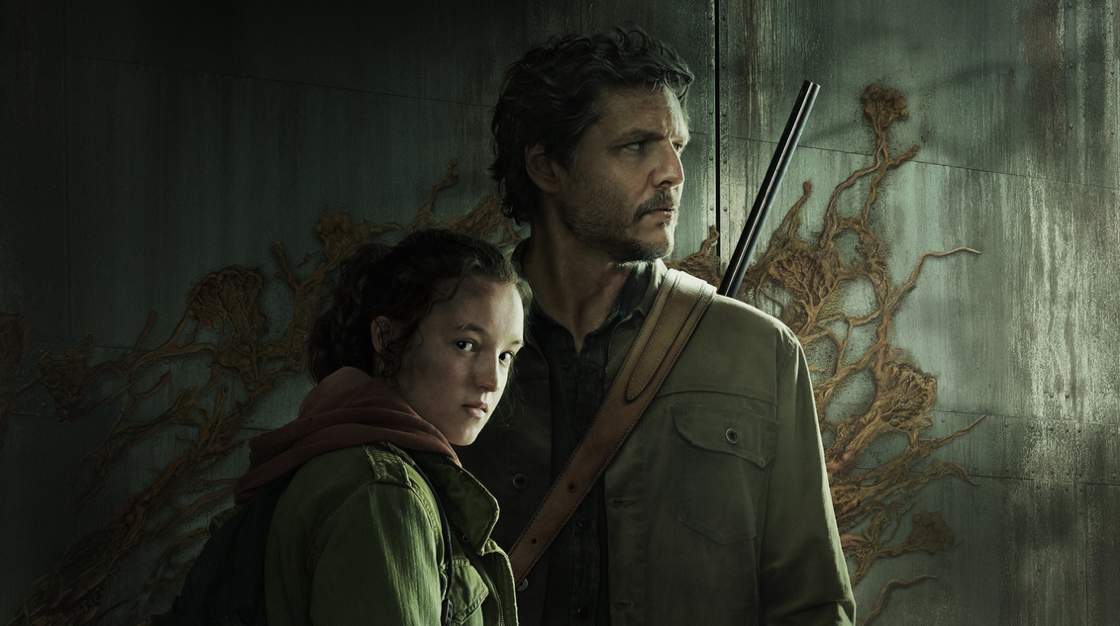
The Last of Us, currently halfway through its first season on HBOMax, tackles the aftermath of a pandemic much worse than ours as as a 14-year-old girl named Ellie (Bella Ramsey) emerges as humanity’s possible last hope. Based on a 2013 video game, the series is set in 2023, twenty years after the onset of a global pandemic, a fungal infection that turns victims zombie-like. Ellie, who’s immune to the infection and could help to create a vaccine, is being escorted across an apocalyptic America full of resistance movements, black markets, and survivalists by smuggler Joel (Pedro Pascal). Critics have praised its ability to transcend its game-based origins, putting it in the pantheon with other prestige dystopian series: “By sucking us in with this post-apocalyptic, zombie-infested setting, The Last of Us is able to use those expectations to shine a light on underappreciated aspects of life,” Gizmodo says. “Things like family, friends, love, and a nice hot meal. Lead by two award-worthy lead performances, the show features stunning production design and locations, powerful writing and filmmaking, all in service of putting two characters through a truly gut-wrenching, page-turner of a story.”
Where to Watch: HBOMax
‘The Leftovers’ (2014-17)
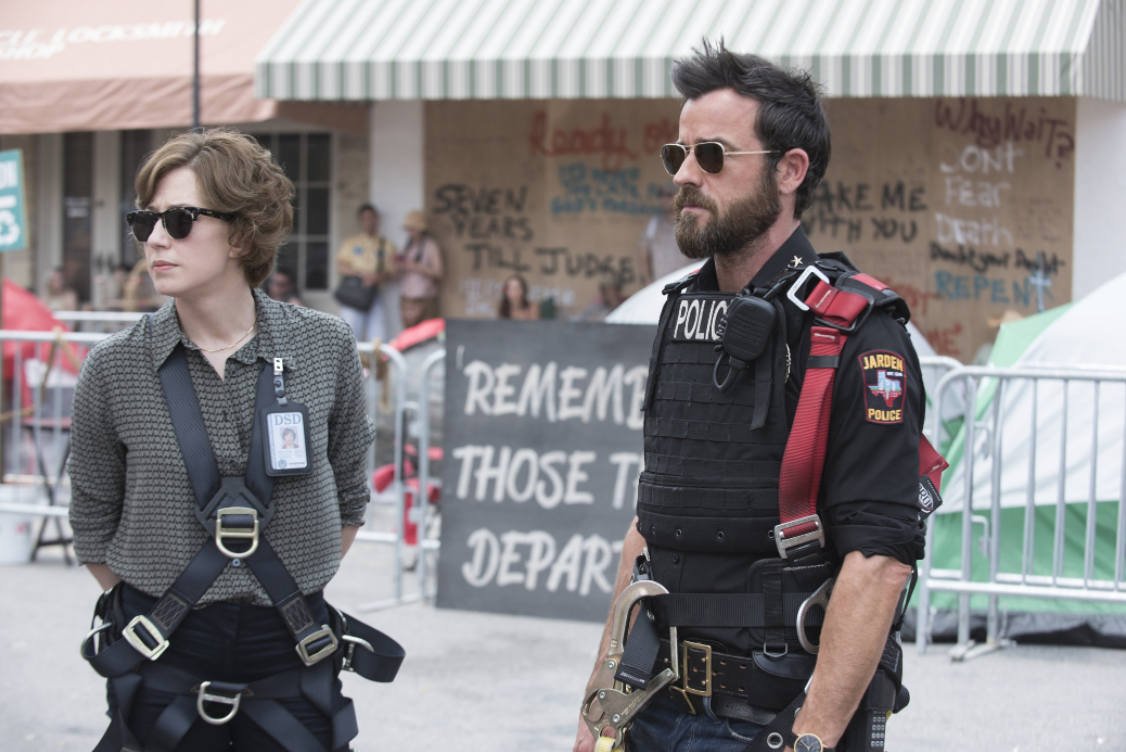
Starring Justin Theroux and created by Damon Lindelof and Tom Perrotta, The Leftovers is based on Perrotta’s novel about what happens after 2 percent of the world’s population vanishes in an instant. The HBO series focuses on police chief Kevin Garvey, played by Theroux, as well as widow Nora Durst (Carrie Coon) and her brother, Reverend Matt Jamison (Christopher Eccleston). In the aftermath of the event, mainstream religion fades and cults pop up in its place, most notably a nihilist group called the Guilty Remnant and a group led by a man who claims to be the second coming of Jesus. The Leftovers is relatively unique among dystopian dramas in its focus on religion, and serves as a smart commentary on the current dissolution of traditional religious institutions. The Leftovers asks: What belief systems will we all turn to if things really get bad?
Where to Watch: HBOMax
‘Papers, Please’ (2013)
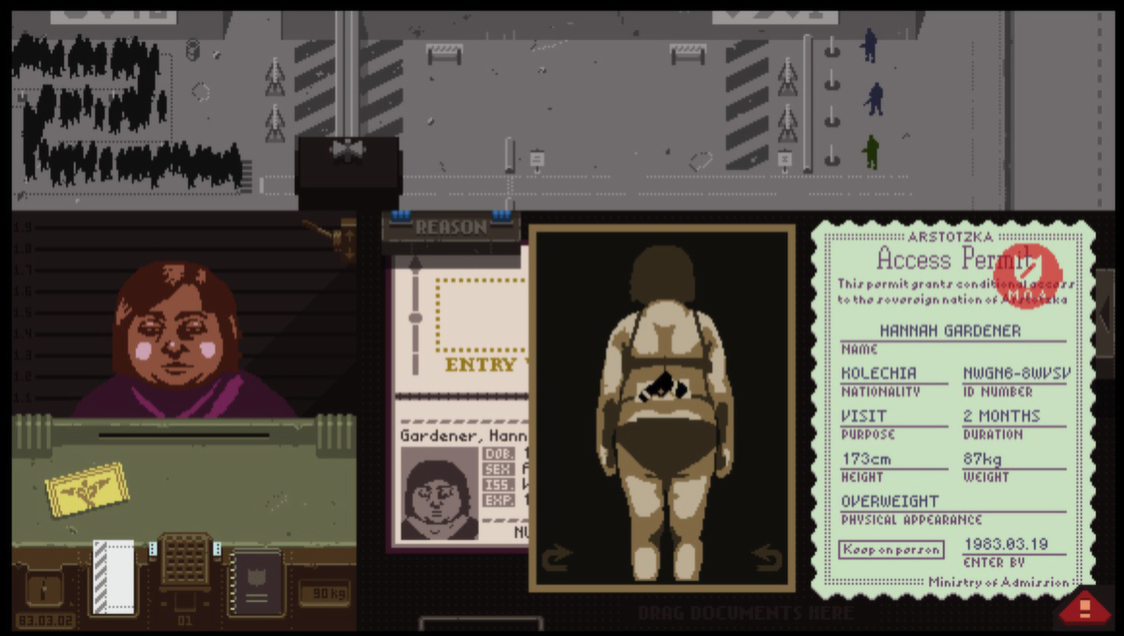
A Peabody-winning video game, Papers, Please has been celebrated as “an example of video games as true art” and “a fascinating exploration of morality versus progress.” Set in a dystopian 1982, it dramatizes the draconian goings-on at a border checkpoint for the fictional country of an Eastern Bloc-like country called Arstotzka, which has recently ended a war with neighboring Kolechia, though tensions remain high. The player takes the role of the immigration officer, charged with following a growing and complicated list of rules. The game tracks mistakes and docks the officer’s pay accordingly, simulating a real day at such a job. Adding to the complexity are such factors as moral dilemmas and illegal means of making money. The scripted story ultimately has 20 possible endings. “Some people react sincerely to the moral questions raised in the game,” creator Lucas Pope told The Verge. “Others really, really enjoy the power trip of wielding complete control over the immigrants’ entry approval.”
Where to Play: Papers, Please
Peabody Conversation with the Cast and Creators of ‘The Leftovers’
“The Leftovers function in an unapologetically emotional space and that can be very upsetting to some people, off-putting to others,” creator Damon Lindelof says of the inspiration for The Leftovers. “But we feel like, even though it’s hard for us to personally to go to those places, we want to transmit that.”
Where to Watch: PeabodyAwards.com
